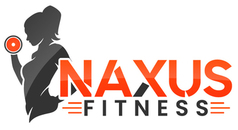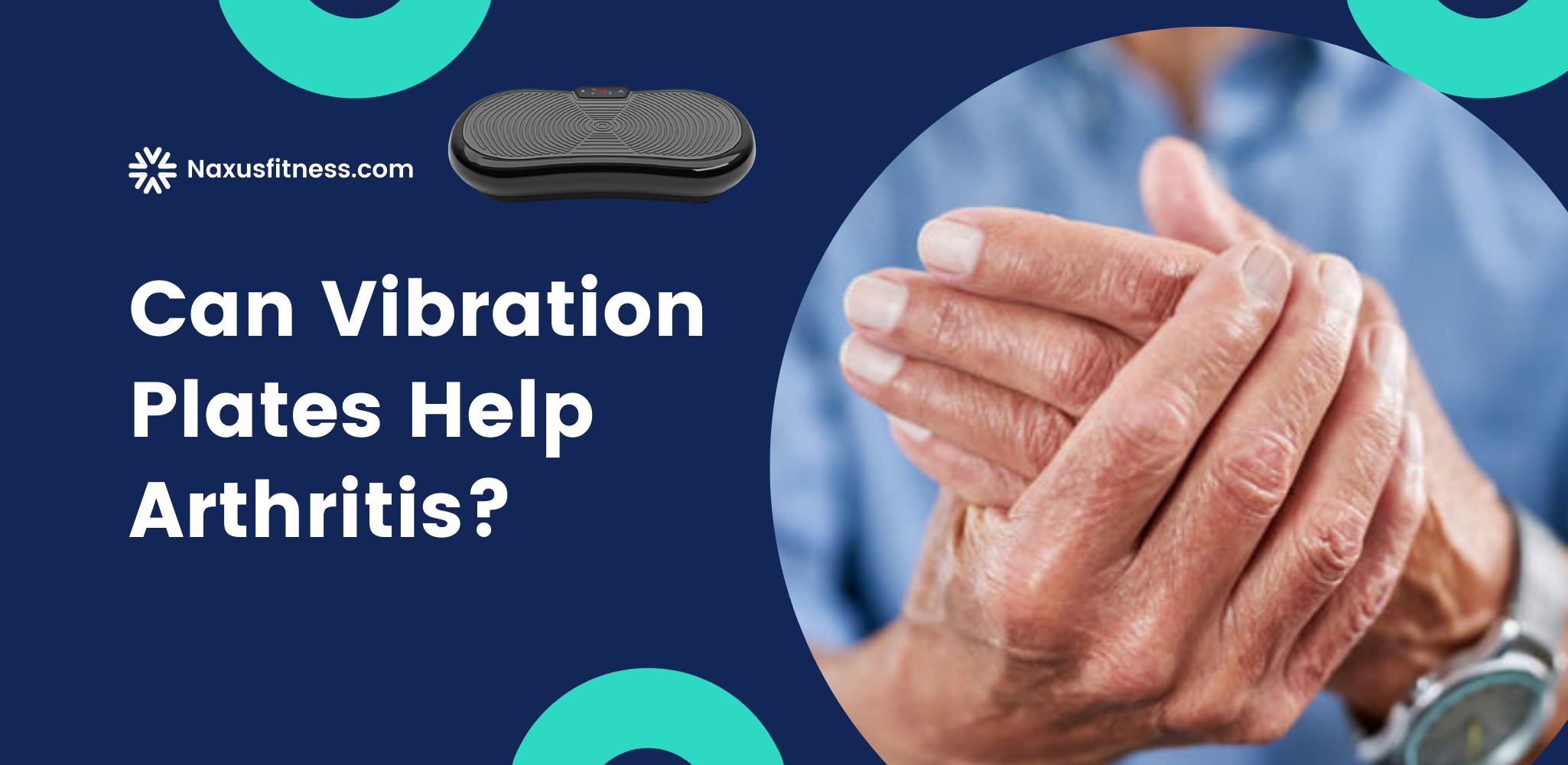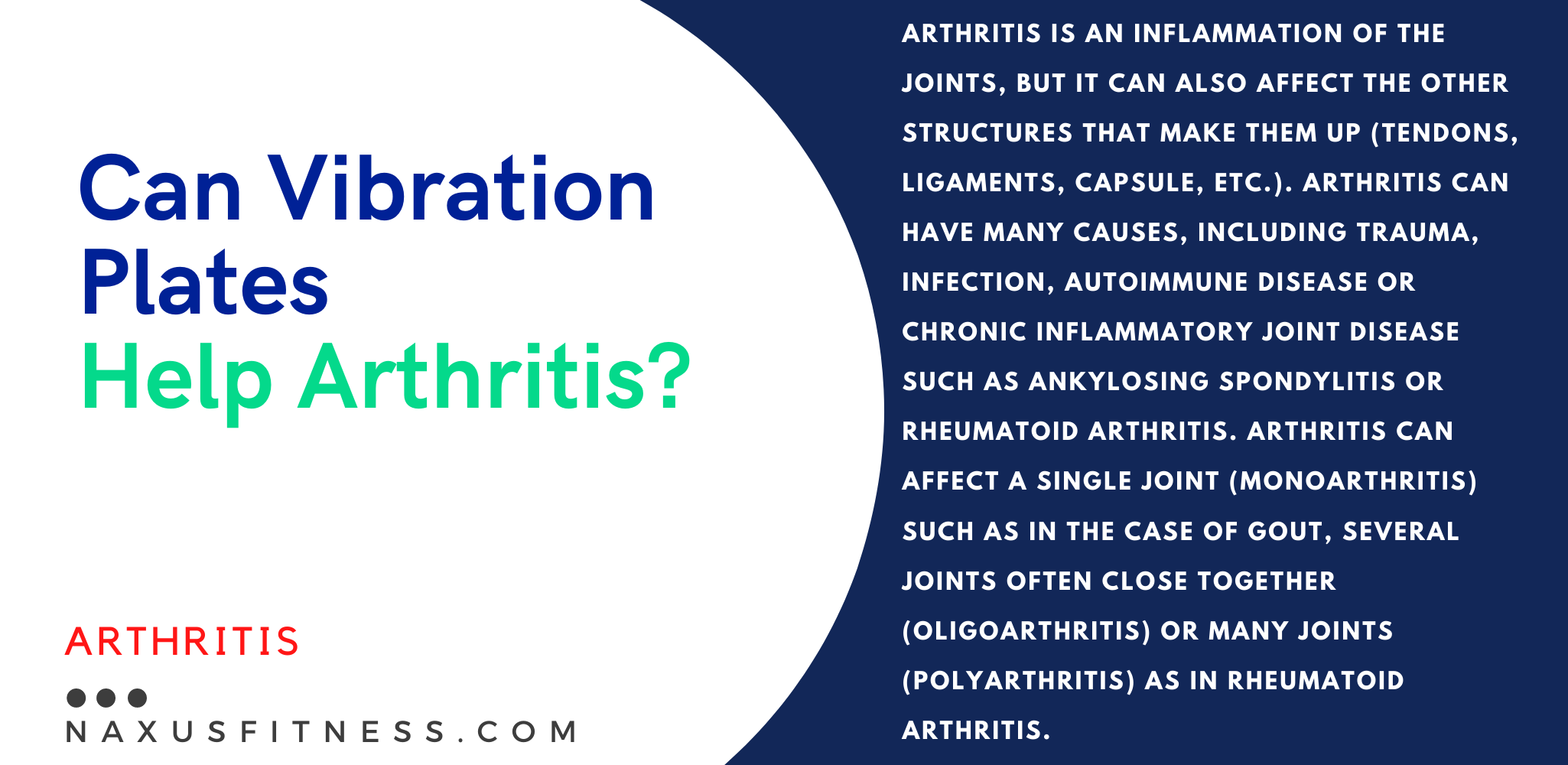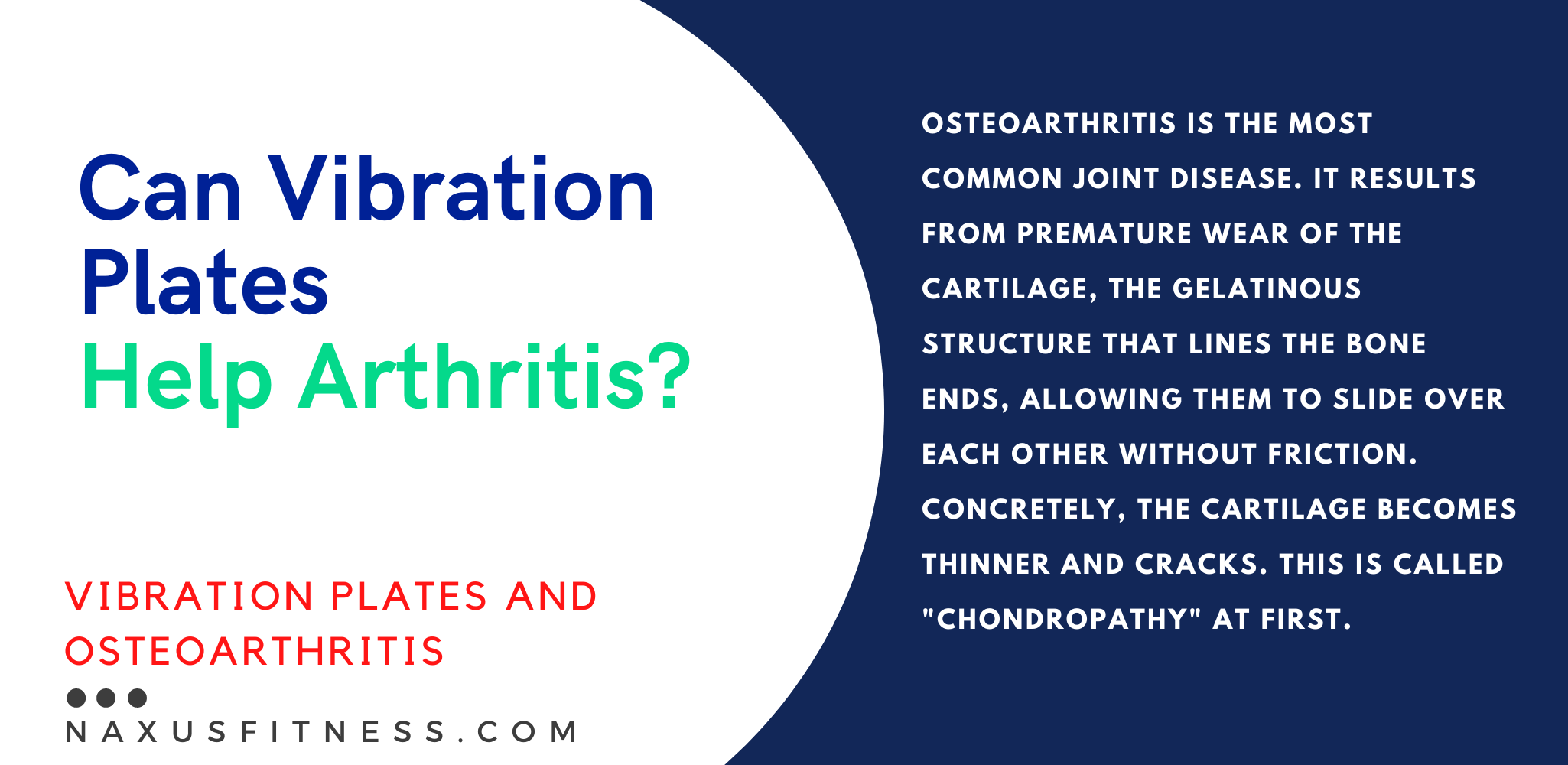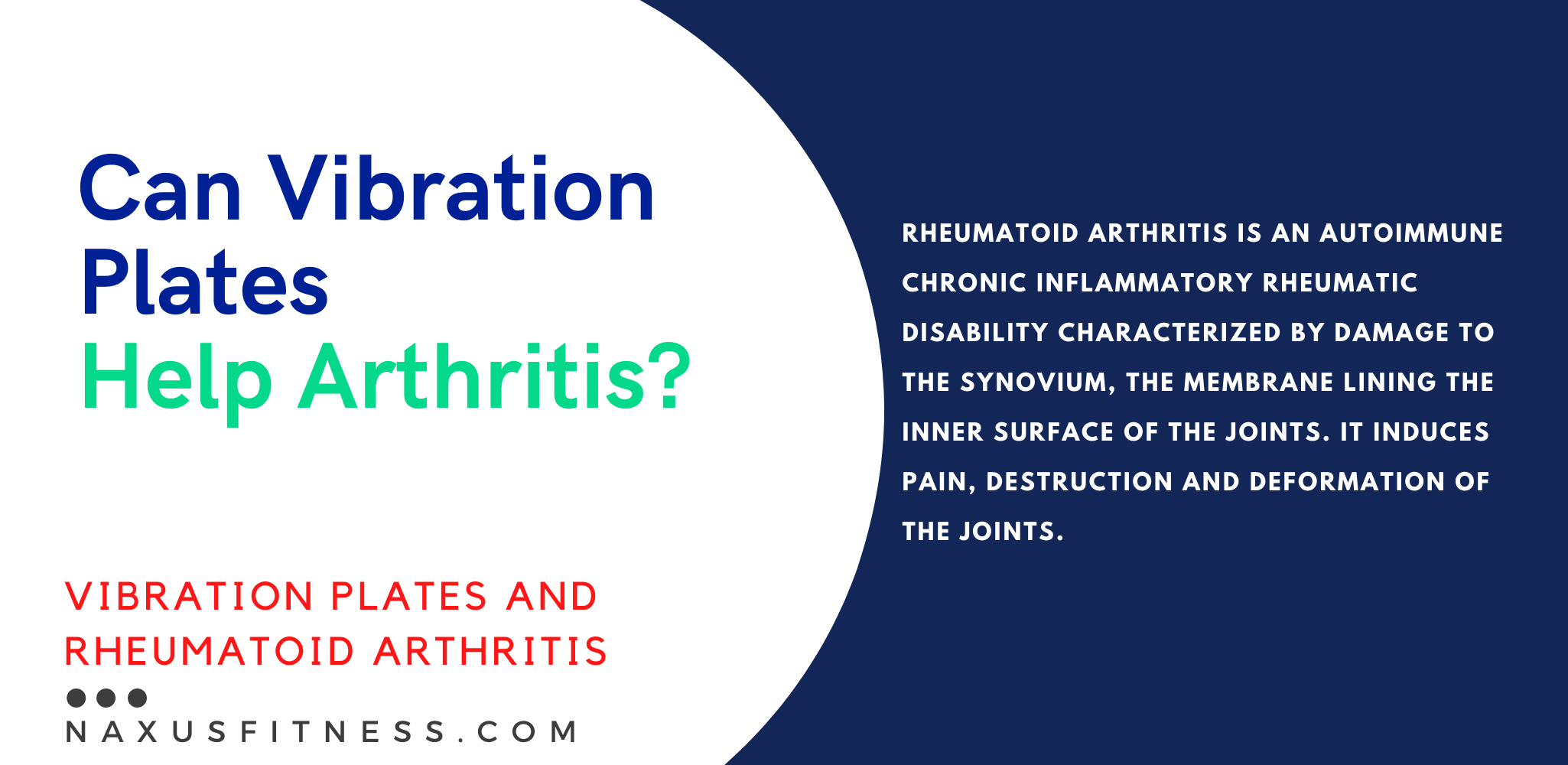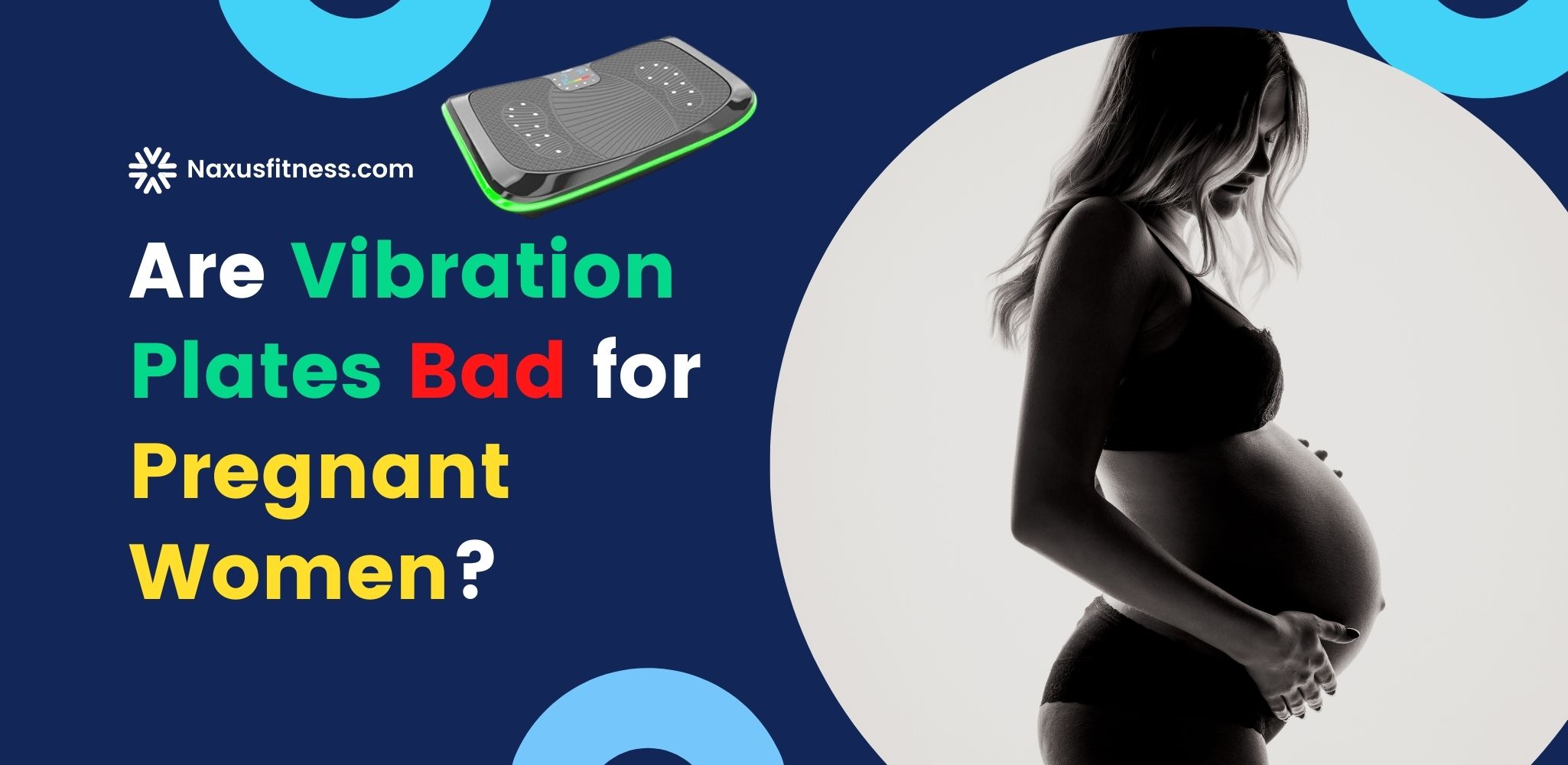Can Vibration Plates Help Arthritis? How Whole Therapy Can Help?
Can Vibration Plates Help Arthritis
Vibration plates are no more a stranger to the fitness world. Nowadays, you can see them in various gyms, athletic training rooms, and even at homes. Common uses of vibration plates include weight loss, muscle building, or body fat reduction. However, the benefits of vibration plates are not limited to just that!
Several studies were made on the effects of vibration plates or whole body vibration (WBV) therapy on the body with time. And more recently, WBV therapy has shown some positive effects on treating conditions like Parkinson’s disease, sclerosis, stroke recovery, improved athletic performance, and some forms of arthritis. However, while the studies show some evidence, the results are often mixed and require further research. If you want to know more about vibration platforms, take a moment to see our in depth article about vibration plates reviews.
Today, we’ll be focusing on the possible effects of vibration plates on arthritis. Out of the many forms of arthritis – WBV therapy is more common in treating rheumatoid arthritis and osteoarthritis. Well, that is what some studies suggest! So, if you want to learn more about the effects of vibration plates/ WBV in treating arthritis, just read on.
Contents
Arthritis condition
Several studies have shown the positive effects of WBV in treating patients with osteoarthritis and rheumatoid arthritis. Such disorders cause stiffness and inflammation in one or more joints. As a result, patients experience intense pain due to the tightening of connective tissues in the knees, shoulders, lower back, hips, and other flexion points.
Osteoarthritis and rheumatoid arthritis are the two most common types of arthritis. Both of these conditions show similar symptoms. Hence, it is important that you learn how to distinguish them.
In a nutshell, Rheumatoid arthritis is an autoimmune disease. In this disorder, the immune system malfunctions and attacks the synovial membrane, which protects the joints. Rheumatoid arthritis can occur in several joints simultaneously. On the other hand, osteoarthritis usually takes place in an isolated joint, commonly in the knee. The smooth cartilage joint surface will wear out in this condition, resulting in pain and bone density loss.
Now that you have a better idea about both the conditions let’s discuss the possible impacts of vibrations plates in treating them separately.
Vibration Plates and Osteoarthritis
Knee osteoarthritis (knee OA) is one of the most common conditions, affecting around 12% – 16% of senior citizens in the US. WBV therapy may help treat knee osteoarthritis and may even slow disease progression. However, there are not many studies to back this. In fact, other than positive results, there have been some contradictory studies and safety issues that discourage the whole notion of using vibration plates for osteoarthritis.
Generally, older people that have strong quadriceps have a 60% lesser risk of developing knee OA than the ones with weaker quads. However, strengthening the quads requires intense workouts, which may not be tolerable for older people. This is where vibration plates come in!
Since WBV causes muscles to stretch and contract, it can intensify even the most basic exercises. And thus, WBV can help older people strengthen their muscles and decrease their risk of developing osteoarthritis. Additionally, WBV combined with exercises may delay muscle oxygen desaturation and increase blood flow to the gastrocnemius muscles and quadriceps.
When it comes to using vibration plates in treating osteoarthritis, there have been various studies that suggest that WBV may effectively relieve knee OA in older people. In a particular study from Denmark, researchers compared proprioception and knee muscle strength in 52 older women (average age of 60). Here, the researchers assigned the patients to three groups – WBV exercise on a balance board (vibF), WBV exercise on a stable platform (vibM), and a control group.
The WBV groups exercised twice a week with increasing intensity. After eight long weeks, the VibM group showed increased muscle strength and isometric knee-extension compared to the control group. On the other hand, the vibF group showed proprioception improvements.
In another study performed at the University of Florida, Gainesville, researchers studied the effects of a single session of WBV therapy on the physical performance of people with knee OA. The study showed that WBV training improved the subjects’ ability to perform a 20-meter walk test and a step test.
In contrast, another study in Physical Medicine & Rehabilitation monitored a group of middle-aged women with risk factors for knee OA for 12 weeks. The study showed no improvements or benefits even after the addition of WBV training.
The bottom line is that the benefits of WBV training in treating osteoarthritis still need more clinical studies. While there may be some possibility that WBV training may have certain positive effects in treating knee OA, the studies are limited, and results are varied.
Vibration Plates and Rheumatoid arthritis
Rheumatoid arthritis can lead to pain and swelling in joints. As a result, people suffering from rheumatoid arthritis lose the ability to carry out normal tasks, leading to reduced bone mineral density (BMD) and reduced bone mass. BMD refers to the calcium and other minerals in the bones that keep them strong and healthy.
When it comes to treatments of rheumatoid arthritis, physical exercise is already considered an effective therapy. However, due to the lack of mobility, some patients may not be able to perform physical activities. Hence, WBV training proves beneficial for such patients. All they need to do is stand on a vibration plate. The machine sends vibrations through the feet, legs, trunk, and head. This acts as a great alternative to high-intensity exercises with minimal efforts.
Backing the benefits of WBV, a study of 31 female patients with rheumatoid arthritis was conducted. Here, one group of subjects performed 15-minute WBV sessions twice per week for 12 weeks. Another group carried out their daily life without WBV training for 12 weeks (control group). By the end of the study, the researchers calculated the subjects’ physical activity, disease activity, and BMD.
The study showed that WBV training has the ability to improve fatigue levels and functional ability in patients suffering from rheumatoid arthritis. Additionally, WBV can also help in preserving bone strength.
Though the study shows positive effects of WBV, it was only carried out on female patients. Also, the researchers did not consider other aspects, such as menopausal status, calcium intake, vitamin D, etc. Hence, this study alone isn’t sufficient to back the use of WBV for arthritis.
Conclusion
The answer to “can vibration plates help arthritis?” is not clear. There is insufficient evidence that can prove the benefits of vibration plates in treating arthritis. However, if you want to give it a try, you can! Before doing so, we recommend you consult with your physician and come up with a proper treatment plan.
References:
https://pubmed.ncbi.nlm.nih.gov/22130389/
https://pubmed.ncbi.nlm.nih.gov/20128338/
https://academicjournals.org/journal/IJMMS/article-full-text-pdf/C8D40AD46975
https://pubmed.ncbi.nlm.nih.gov/19147365/
